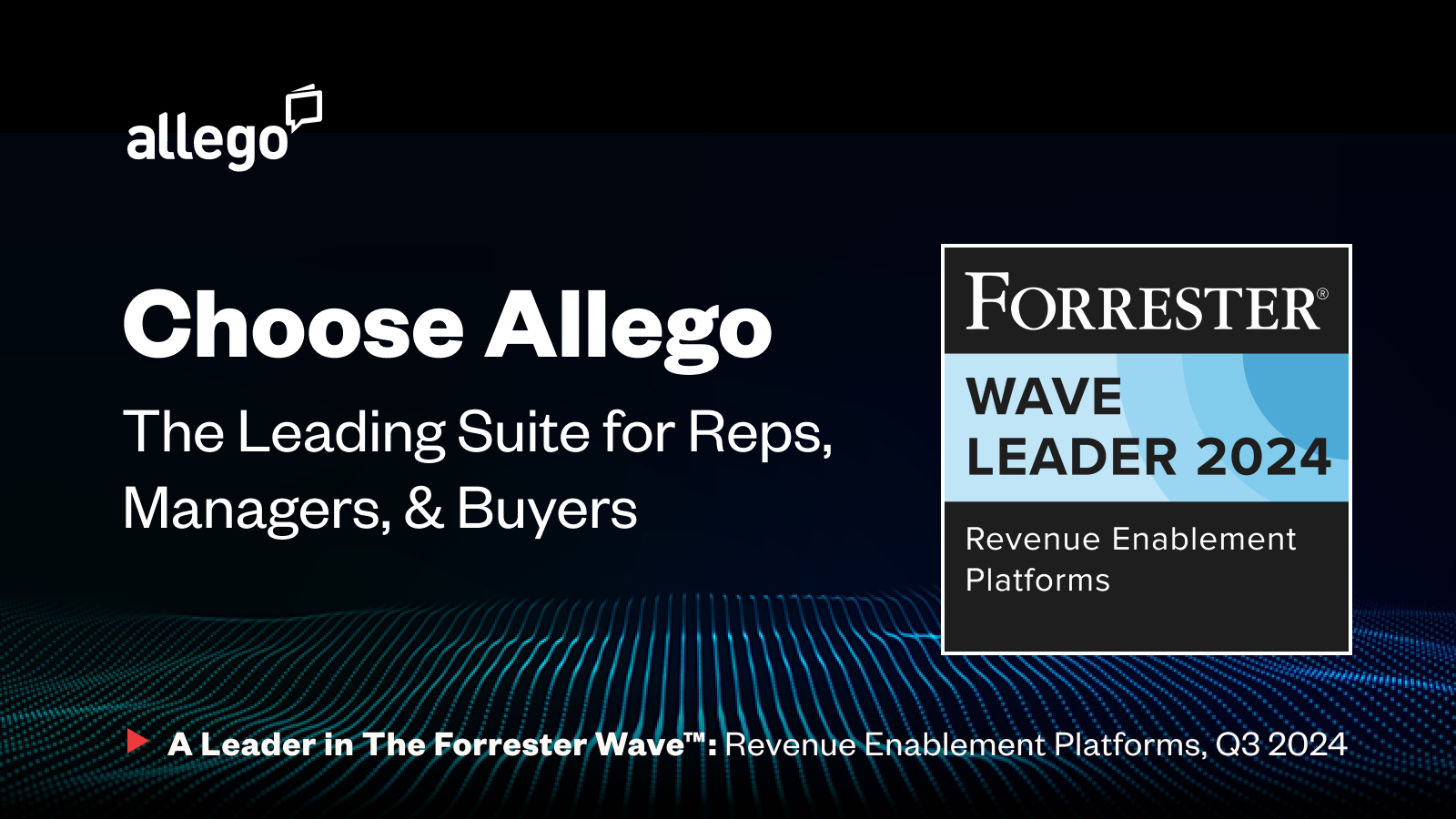Video
About Face Allego Customer Story
In this video, learning and development expert, Pat D’Amico of About Face Development, LLC, discusses his experience driving deliberate practice and role play using Allego. Pat was able to improve sales certification scores by nearly 2x using Allego’s modern learning tools.
Full Transcript
We’ve done some actual study work where we’ve gathered data, where we’ve taken the individuals, and we recorded them at the end of a live training session, delivering messaging or answering key questions or objections. Then we sent them home, and we’ve given them a few weeks to practice using Allego and then also having them resubmit at that time.
We’ve seen scores go from, on a rubric with five being the highest, in the low twos to the mid to high fours. The question that I always pose to the organizations is, Let me ask you, where was that practice taking place in the past, from the time they left the training course where they were, let’s say, in the low two’s out of a five, to the time they mastered the messaging or the objection handling? Where was that practice taking place?”
Well, we know that practice was taking place in front of customers. Then the next question we say is, “Which customers was that practice taking place with?” The answer is, the best customers, because if I am a rep and I leave a training course, and I’m not completely comfortable with my messaging or the objection handling, I’m going to go to my best customers. I’m gonna go to those customers who trust me the most, that I feel the most comfortable, who I know if I make a mistake it’s not going to be hugely potentially detrimental.
Now what you’ve done is you’ve taken that skill mastery, and you’ve put it on the individual utilizing the tool. Here’s the interesting thing, is that the individuals using the tool, they know that they’re advancing. I learned this, because there were times when we put very low requirements on individuals. We said, “Hey, look. You’ve done it at the end of class. Take a few days. Practice it a few times, and resubmit another video.” We would say that, “Practice it a few times.”
Those individuals could come back later and say, “I practiced that about 15 to 20 times.” It was at that point I knew we were on to something here. I said, “Jeez, we weren’t being that hard on you about mastering it.” They said, “Yeah, but I watched myself, and I didn’t like the way I looked, or I didn’t like the way it sounded.” It really helped me realize that that the role play we do in the classroom, where you and I are partnered together, and you’re telling me how great I am the first time I do it, individuals are going to be far more critical of themselves than anyone else is ever going to be.
When we first started using the tool, we would actually do surveys with the folks that utilize it. We asked them that question, “What did you find most valuable about the tool?” I think more than anything what we got back was a fairly simple statement, which was, “The ability to watch and critique myself and know where I can improve” was the most valuable.
There’s often no better coach than the individual themselves. Thy know what they’re capable of, and they see what doesn’t feel right or look right. The tool allows them to make that assessment themselves and in the moment make that correction, which really prevents them building bad habits.



